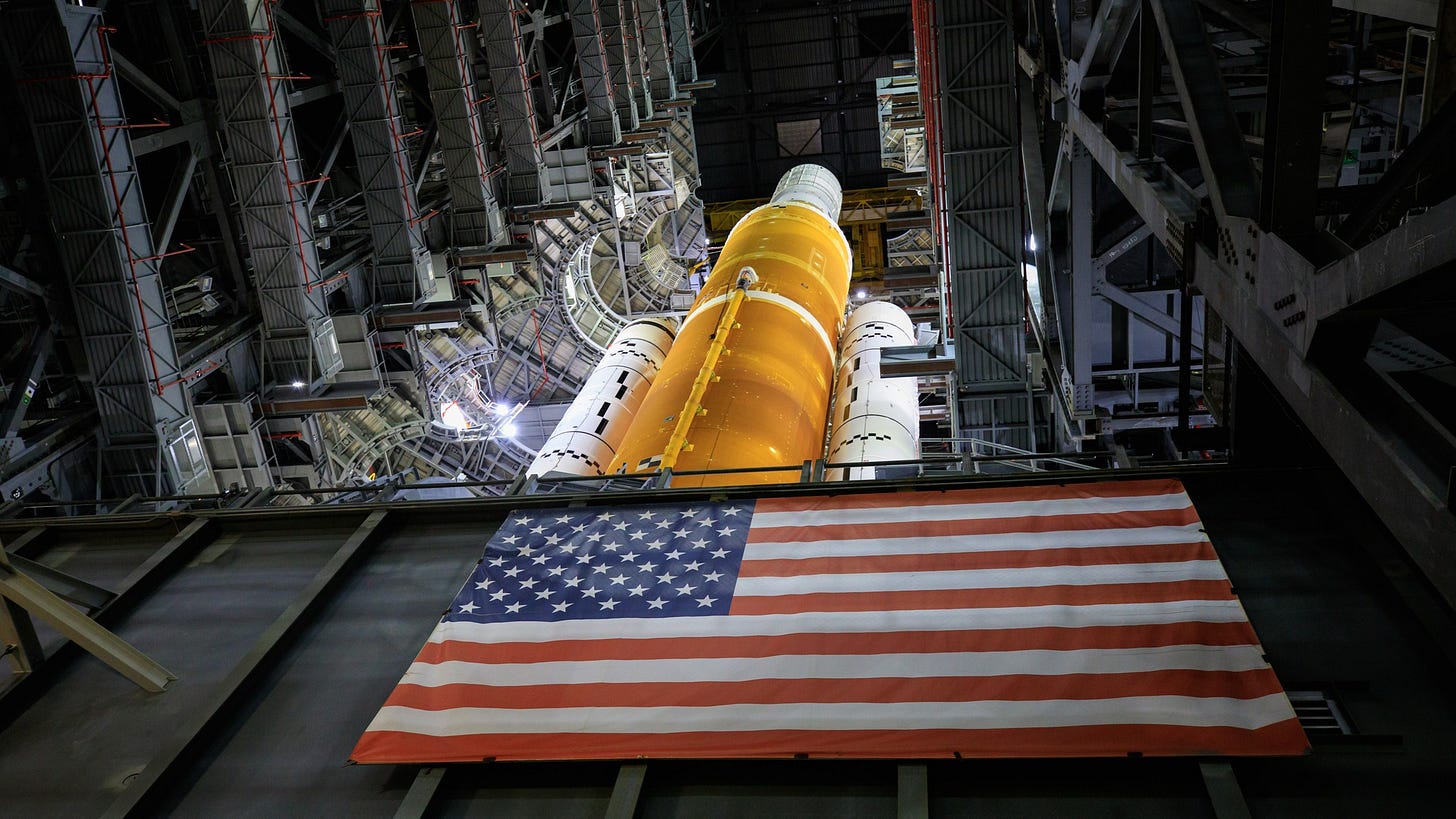
Thanks for finding Full Throttle. The newsletter will be delivered twice a week for free once you subscribe here. Follow me on Twitter, Instagram, and Linkedin.
It’s a common saying of those involved in the industry, “space is hard.” Just ask the folks at NASA who are trying to return to the moon. But those same NASA officials say the next-generation capsule will orbit the moon without astronauts this year, more than half a decade late. The promises of an American getting back to the moon by 2024 have been pushed to 2025 at least. That may not be the last delay.
An abbreviated NASA video on the Orion capsule. (Credit: NASA)
The capsule is called Orion. It’s been to space. That was seven years ago on a test flight into low earth orbit. It looks a lot like the Apollo capsules, but bigger. There is a reason for this. Getting back to earth, when one is moving very fast, is best accomplished with a blunt-shaped capsule.
Edited version of Orion reentry and splashdown in 2014. The heat shield is seen burning away (ablating) as expected. (Credit: NASA)
ARTEMIS
NASA is always looking for ways to promote its programs. This one is dubbed Artemis, after the twin sister of Apollo. She was the Greek goddess of wild animals, the hunt, and vegetation. NASA proclaims the spacecraft will take the, “first woman and the next man,” to the moon.
Artemis was put together from the remnants of the Constellation project, which was canceled by the Obama administration. A lot has changed since then. A new space race has developed to reach the moon. The Chinese government currently has a probe working on the dark side of the moon. The south pole of the moon is now the target for missions because there appears to be water at the pole. Water can be converted into hydrogen fuel to use to venture beyond the moon, possibly to Mars.
A look at the path Artemis 1 will take during its mission. (Credit: NASA)
The plan is to set up bases on the moon (to stay) as a way to learn how humans might be able to colonize Mars. Experiments and research are underway to understand how to build and maintain structures and a base on an inhospitable celestial body.
MARCH LAUNCH SCHEDULED
In the coming weeks you will see Artemis 1 rolled out to the pad at the Kennedy Space Center. It will be impressive. It is the biggest rocket ever built, using former space shuttle engines to power it to space.
Just like the early space program, NASA is using incremental flights to prove technology and shake-out vehicles. So, Artemis 1 will be an unmanned mission that will venture beyond the moon, the farthest from earth for a human rated vehicle.
Test flight of Orion in 2014. (Credit: NASA)
Artemis 2 will carry four NASA astronauts. But like Apollo 8, this mission will only orbit the moon. Artemis 3 is the mission planned to put humans back on the surface of the moon. A lot has to happen to make Artemis 3 work.
STILL TO COME
SpaceX is working on turning its Starship into a lunar lander. But there are problems trying to create a new generation of spacesuits for the moon surface. NASA, which was developing those Extravehicular Mobility Units on its own, has called for bids from private industry to build the suits.
Despite the remaining challenges, Artemis 1 and Orion’s journey will put NASA back into the human deep spaceflight business again, albeit more than 50 years after orbiting the moon the first time.
Orion capsule stacked onto its SLS rocket. (Credit: NASA)
The former NASA Administrator Jim Bridenstine pushed this vision relentlessly during his time. As he would say, “we are going back to the moon to stay.” The latest step is just weeks away.
(Cover photo credit: NASA)




